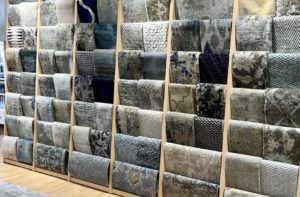The Art of Living Well
April 15, 2010
Glazes in luscious hues drizzle over the stoneware benches, planters, tables and totems made by Eric O’Leary. One bench looks like the artist crushed ripe strawberries over it; another as if he draped it in a celadon-colored stripe painting of the kind made by Agnes Martin or Sean Scully.
O’Leary is a master of marrying color and shape. He’s certainly had enough experience. Now fifty-eight, he’s been involved with clay for more than half a century. He threw his first pot when he was five years old, working alongside his father, Jack, a ceramist who handed down his craft to his son. Today his work is in the permanent collections of a handful of museums, including the New Britain (Connecticut) Museum of American Art, the DeCordova Museum in Lincoln, Massachusetts, and the American Decorative Arts and Sculpture Collection of the Museum of Fine Arts, Boston.
One of his father’s more interesting jobs was as the resident ceramist at Old Sturbridge Village, the central Massachusetts re-creation of early American life. From ages five to ten, Eric dressed up in period costume and lived with his parents and four siblings in quarters over the pottery shop. In 1960, the family moved to New Hampshire, where Jack taught at Dartmouth College. It was Jack who converted a former New Hampshire coop into the studio where Eric still works, naming it Tariki, a Zen term his son translates as “enlightenment through grace.”
While at Dartmouth, Jack met Fujiwara Yu, a master potter and Japanese Living National Treasure who was doing a residency at the school. Fujiwara didn’t approve of the college’s then-primitive clay facilities and ended up working at Tariki. “My job in high school was prepping clay for Mr. Fujiwara,” Eric O’Leary says, acknowledging the master’s influence on his own work—not only in look but also in spirit.
Share
![NEH-Logo_Black[1] NEH-Logo_Black[1]](https://www.nehomemag.com/wp-content/uploads/2022/08/NEH-Logo_Black1-300x162.jpg)







